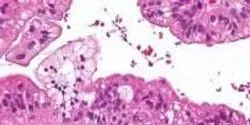Biological Sciences

The University of California, Davis, and HM.CLAUSE have partnered to open a business incubator that will help advance regional innovation in the life sciences. To celebrate this unique collaboration, a launch event was held on Thursday, May 7, at the new innovation center in south Davis.

Gel permeation chromatography (GPC) is the most widely accepted and used analytical method for obtaining molar mass averages of both synthetic and biopolymers. Traditionally, molar mass averages are obtained via a peak position calibration involving a series of standards of known molar mass and chemistry analyzed by GPC coupled to a differential refractive index (RI) detector.

Cell-based assays have become the go-to technology for pharmaceutical, environmental, and toxicology labs. Cells are far less costly to maintain than test animals and don’t involve the ethical considerations. But the complexity of cell-based assays compared with chemical or biochemical assays presents distinct challenges to laboratory managers.


Brownfield sites—mainly abandoned or soon-to-be abandoned industrial facilities—pose huge challenges to governments, communities, and engineering firms charged with restoring them to common uses. At issue are contaminants—chemicals and metals—that if not remediated pose public health concerns.

Researchers at the Virginia Bioinformatics Institute of Virginia Tech have discovered new possibilities for detecting ovarian cancer using microsatellite variations.

A family of proteins known as histones provides support and structure to DNA, but for years, scientists have been puzzling over occasional outliers among these histones, which appear to exist for specific, but often mysterious reasons. Now, researchers have uncovered a new purpose for one such histone variant: preventing genetic mutations by keeping certain so-called “jumping genes” in place.














